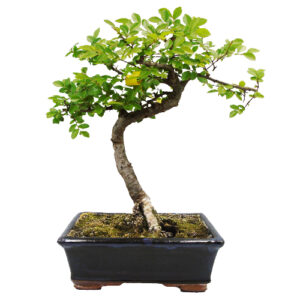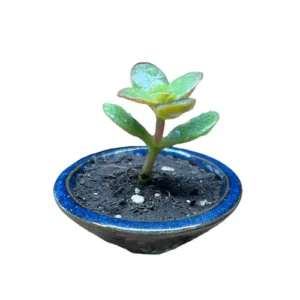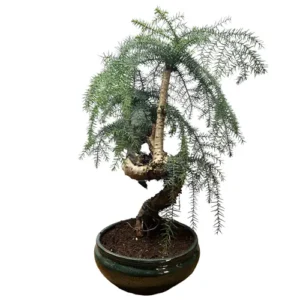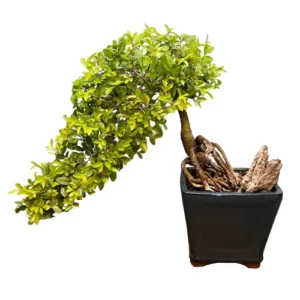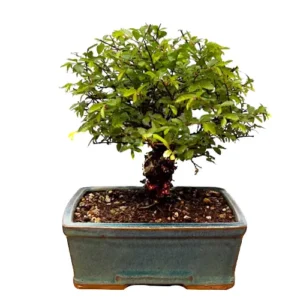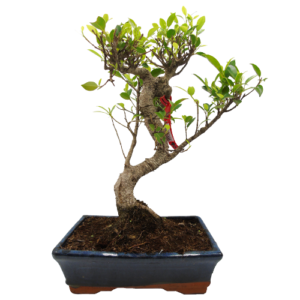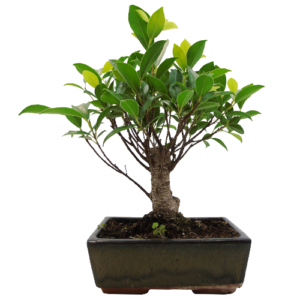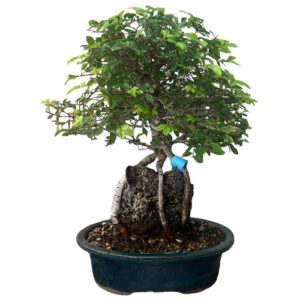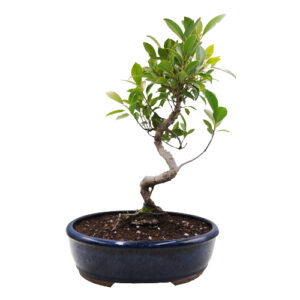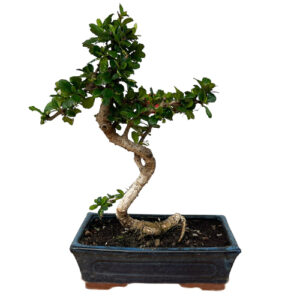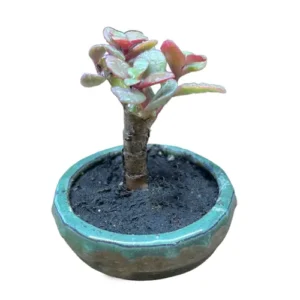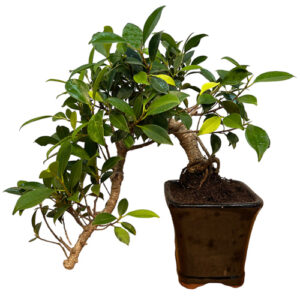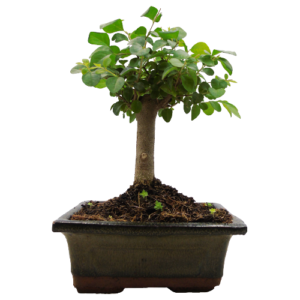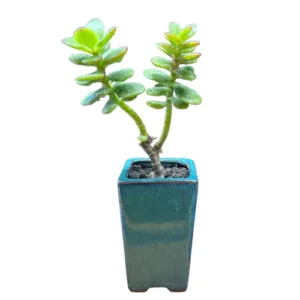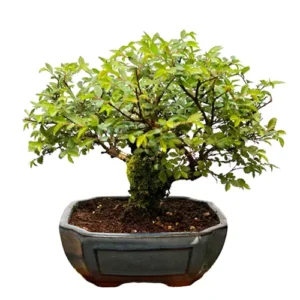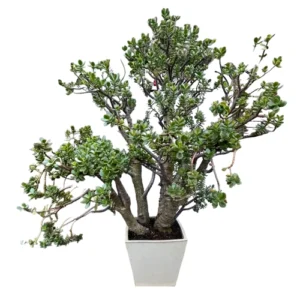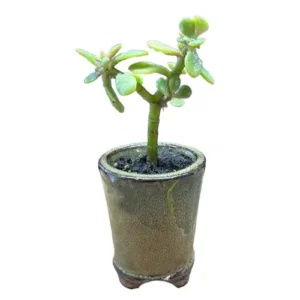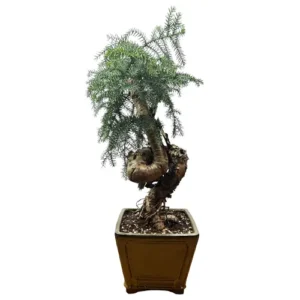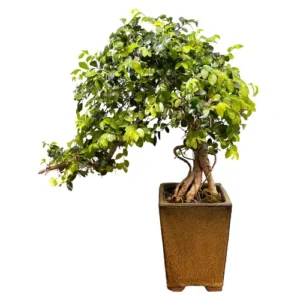Portulacaria afra
Dwarf Jade Bonsai
Often mistaken for the Crassula Ovata, the Dwarf Jade Bonsai is also known as the Elephant bush, pork bush and spekboom in Afrikaans. This popular succulent makes for brilliant houseplants for their minute size and slow growth rate. Native to South Africa, Dwarf Jade Bonsai are sought-after indoor plants in the UK.
Dwarf Jade Bonsai Care Tips
Placement
Dwarf Jade is recommended to be kept near a well-lit window. These species thrive off between 4 and 6 hours of indirect light each day. While these species appreciate lots of bright light direct sunlight is something to be avoided, this can damage the leaves.
Watering
Dwarf Jade are to be watered across the growing season thoroughly just be sure to allow the soil to dry out between watering sessions. This species will respond to a wet-dry cycle simulating its native habitat. Overwatering is something to be mindful of across the winter. Watering should be reduced to once every three weeks in the winter.
Do not leave in standing water this will bring on root rot. This species is much better to underwater than overwater.
Feeding & Fertilising
Dwarf Bonsai should be fed and fertilised with a balanced liquid fertiliser during the spring and summer once every 4 to 6 weeks. During the dormant winter, this should be reduced significantly or ceased altogether.
Pruning & Wiring
Pruning your bonsai is important not only to create or maintain an aesthetic style but to also ensure optimal health. Dwarf Jade respond well to pruning and shaping, regular pruning is advised.
We recommend using wires with a thickness that matches the thickness of the branch: if the wire you choose is too thick you will damage the bark. If it is too thin, it won’t be effective.
Repotting
Repotting your tree is an important way to provide a fresh and suitable soil mix and ensure appropriate root health. Repot in early spring. Generally, your Dwarf Jade Bonsai will require repotting every 2-3 years. However, you should always check if it has become root-bound before you change pots. You can do this by lifting the tree gently out of the pot by the main trunk and examining the root system. You will know it is ready if you can see that the roots are circling around each other and the pot. If, however, they still appear contained in the soil, you should place it back and wait until the following spring to check again.
Trees that are ready for repotting will require root pruning, a suitable new pot and appropriate soil mix.
When repotting, do not cut back the root mass by a large amount, and choose a well-draining soil mix that has a neutral or slightly higher PH value of 5-6 but not over 7. We tend to use a mixture of different speciality bonsai soils on our trees. Every species is different so please contact us for free soil-mix advice or to take advantage of our repotting service.
Bonsai make for a one-of-a-kind indoor plant offering elegance, nature and art all in one minute form. Across an array of exquisite and erudite species, they all demand their own specific care and cultivation needs in order for their beauty to flourish. We have an extensive library of care guides for indoor bonsai trees so you can make an informed and considered choice. It’s not about selecting the perfect bonsai, it’s about selecting the perfect bonsai for you.
Dwarf Jade Bonsai - Typical Queries
How to propagate Dwarf Jade bonsai?
Dwarf Jade bonsai can be propagated using cuttings of both entire leaves or branches. The summer is the best time to propagate Dwarf Jade.
Do Dwarf Jade bonsai attract pests and diseases?
As long as it’s receiving the sunlight it demands and it isn’t overwatered, you should have health issues with your Dwarf Jade bonsai, and neither should you see any intruders.
Can you keep a Dwarf Jade bonsai outdoors?
Dwarf Jade can be kept outdoors but this is only appropriate for warm and tropical climates. In Northern temperate climates, they are typically sold as indoor bonsai due to their ease of care in such.

